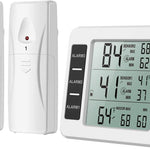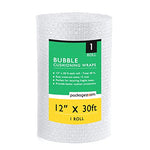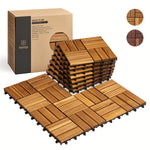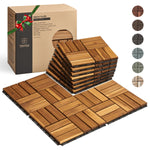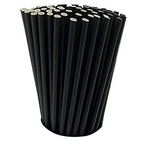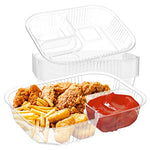You have no items in your shopping cart.
When it comes to waste management, one essential tool that often goes unnoticed is the trash bin. Found in every corner of our homes, offices, and public spaces, these unassuming containers play a vital role in keeping our surroundings clean and organized. In this article, we will explore the importance of trash bins, their various types, maintenance tips, and how they contribute to a healthier and more sustainable environment.
The Many Faces of Trash Bins
1. The Classic Trash Bin
The classic trash bin, also known as a garbage can or waste bin, is the most common type found in households. Its sturdy construction, often made of plastic or metal, ensures durability and longevity. These bins come in various sizes, accommodating the disposal needs of different spaces, from small kitchen bins to larger outdoor receptacles.
2. Recycling Bins: Sorting for a Greener Future
Recycling bins are an integral part of waste management systems aimed at reducing environmental impact. These bins are specifically designed to segregate recyclable materials such as paper, plastic, glass, and metal. By properly separating recyclables, we contribute to the conservation of natural resources and the reduction of landfill waste.
3. Composting Bins: Transforming Waste into Fertile Soil
Composting bins provide an excellent solution for organic waste disposal. With the right combination of food scraps, yard trimmings, and proper aeration, these bins facilitate the decomposition of organic matter, turning it into nutrient-rich compost. Composting bins are a fantastic addition to gardens and help reduce the amount of waste ending up in landfills.
4. Public Trash Bins: Keeping Our Streets Clean
In bustling cities and public spaces, the presence of trash bins is crucial to maintaining cleanliness and orderliness. Strategically placed bins encourage individuals to dispose of their waste responsibly, preventing littering and ensuring a pleasant environment for everyone. Public trash bins often feature durable materials and efficient designs to handle high volumes of waste.
Maintaining a Clean and Odor-Free Trash Bin
1. Regular Cleaning: Bid Farewell to Foul Odors
To keep your trash bin smelling fresh, regular cleaning is essential. Rinse the bin with a mixture of water and vinegar or a mild detergent to eliminate bacteria and odors. Scrub the interior and exterior surfaces, paying close attention to crevices and handles. After cleaning, make sure the bin is thoroughly dry before placing a new trash bag inside.
2. Odor Neutralizers: A Breath of Fresh Air
For stubborn odors that persist even after cleaning, consider using odor neutralizers. Baking soda sprinkled at the bottom of the bin or specialized odor-absorbing products can effectively eliminate unpleasant smells. Additionally, you can place a scented trash bag or a few drops of essential oil on a cotton ball inside the bin to create a refreshing aroma.
3. Proper Waste Disposal: The Key to Preventing Odor
Preventing odor starts with proper waste disposal. Ensure that all waste is bagged securely before placing it in the bin. Liquids should be sealed tightly in leak-proof containers, and any food waste should be double-bagged to prevent leaks. By minimizing direct contact between the waste and the bin, you can significantly reduce the chances of unpleasant odors.
4. Regular Inspections: Early Detection of Issues
Periodic inspections of your trash bin are essential to catch any potential issues early on. Check for cracks, holes, or damaged hinges that may compromise the bin's functionality. Promptly address any damages by repairing or replacing parts as necessary. Regular inspections ensure that your trash bin remains in optimal condition for effective waste management.
FAQs about Trash Bins
1. How often should I clean my trash bin?
It is recommended to clean your trash bin at least once every two to three months. However, if you notice strong odors or visible dirt, it's best to clean it more frequently.
2. Can I use bleach to clean my trash bin?
Yes, you can use a diluted bleach solution to disinfect your trash bin. Mix one part bleach with nine parts water, and thoroughly rinse the bin after cleaning.
3. What should I do if my trash bin gets damaged?
If your trash bin gets damaged, check if it is still under warranty. If so, contact the manufacturer for repair or replacement options. If not, consider purchasing a new bin or contacting a local waste management company for assistance.
4. Can I recycle a broken trash bin?
Depending on the material of your broken trash bin, you may be able to recycle it. Check with your local recycling facility or waste management company for specific guidelines.
5. How can I prevent pests from getting into my trash bin?
To deter pests, ensure that your trash bin has a secure lid that fits tightly. Additionally, avoid placing food waste in the bin uncovered, as it can attract unwanted visitors. Consider using pest deterrents, such as mint leaves or mothballs, near the bin to keep pests away.
6. Are there regulations regarding the use of trash bins in public spaces?
Yes, many municipalities have regulations and guidelines for the use of trash bins in public spaces. It is essential to familiarize yourself with these regulations to ensure proper waste disposal and avoid potential penalties.
Conclusion
In our quest for a cleaner and more sustainable future, let's not overlook the importance of the humble trash bin. From managing household waste to enabling efficient recycling and composting, these bins are true unsung heroes. By understanding the various types of trash bins, maintaining cleanliness, and practicing responsible waste disposal, we can all contribute to a healthier environment and a better world for future generations.


